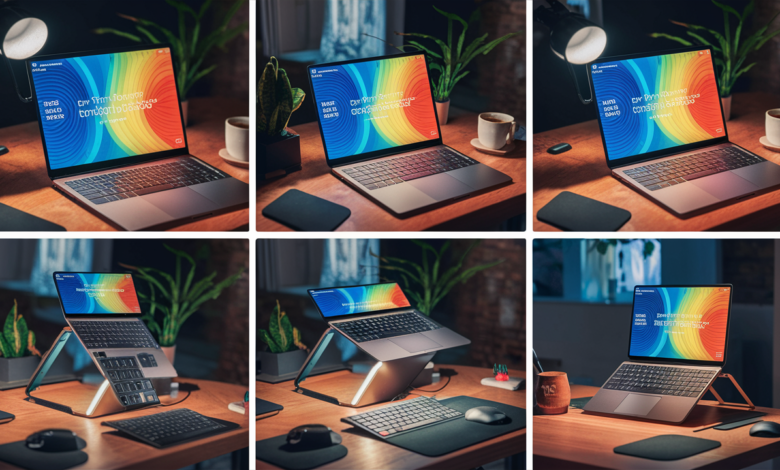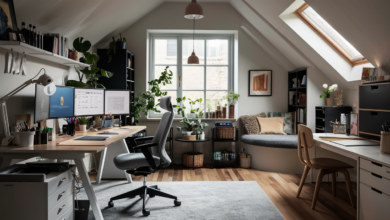How to Adjust Laptop Settings for Comfort

When you settle down to work on your laptop, comfort should be at the forefront of your mind. Did you know that how you adjust your settings can significantly impact your well-being? Ergonomics plays a critical role in preventing discomfort and fatigue during those lengthy hours spent typing away or binge-watching shows.
By taking a moment to fine-tune various aspects of your laptop, you can create an environment that promotes better posture and reduces strain. Let’s dive into effective ways to adjust laptop settings for comfort so you can work smarter, not harder!
Understanding laptop settings and how they impact comfort
Laptop settings play a vital role in your overall comfort during use. Many users overlook how adjustments can significantly enhance their experience.
Take screen settings, for example. A high brightness level might look appealing but could lead to eye strain over time. Conversely, dimming the screen while optimizing contrast can create a more comfortable viewing environment.
Keyboard and touchpad sensitivity are equally important. If these are set too high or low, you may find yourself straining your hands or making frequent mistakes while typing. Adjusting these settings ensures fluid movement and reduces fatigue.
Additionally, consider scaling options for text and icons on your display. Ensuring that everything is easy to read without squinting goes a long way toward maintaining comfort throughout the day. Small tweaks can make significant differences in creating a user-friendly workspace tailored just for you.
Adjusting screen brightness and contrast for eye strain
Finding the right screen brightness is essential for your comfort. Too bright, and you risk glare; too dim, and the strain increases. Aim for a level that matches your surrounding light.
Adjusting contrast can also make a significant difference. A higher contrast setting often helps text stand out more clearly against backgrounds. This reduces the effort your eyes need to put in while reading or working on tasks.
Many laptops have automatic settings that adjust based on ambient light. However, don’t rely solely on these features. Manual adjustments allow you to fine-tune according to your specific needs.
Consider using blue light filters as well. These can help lessen eye fatigue during long hours of work, particularly if you’re staring at screens late into the evening.
Changing keyboard and mouse sensitivity for hand fatigue
Finding the right keyboard and mouse sensitivity can significantly reduce hand fatigue. If your settings are too sensitive, you might find yourself making unnecessary movements. Conversely, if they’re not sensitive enough, you’ll strain to make even the simplest of actions.
Start by adjusting the mouse sensitivity in your device’s settings. A lower DPI (dots per inch) can help create a smoother experience that requires less effort from your hand.
For keyboards, consider switching to an ergonomic layout or using key presses that feel lighter under your fingers. This minimizes the force needed for typing.
Experiment with different configurations until it feels comfortable. Minor tweaks can lead to major differences in how relaxed your hands feel during prolonged use.
Listening to what feels best for you is essential—your comfort should always come first as you navigate through tasks on your laptop.
Setting up a comfortable viewing angle
Setting up a comfortable viewing angle is crucial for reducing neck and back strain. Ideally, your screen should be at eye level. If you find yourself looking down or craning your neck, it’s time to make adjustments.
A laptop stand can elevate your device to the right height. This simple accessory transforms how you interact with your computer. Alternatively, stacking books under your laptop can also work in a pinch.
Position the screen about an arm’s length away from you. This distance helps prevent eye fatigue while ensuring that text remains clear and sharp.
Remember to tilt the screen slightly backward, between 15 to 20 degrees. This angle minimizes glare and allows for better visibility without straining your eyes.
Taking these steps creates a more natural posture during use, making long working hours feel less tiresome and more manageable.
Using external accessories for better ergonomics
Using external accessories can significantly enhance your laptop experience. A quality keyboard and mouse are essential for reducing strain on your hands and wrists. These devices offer better support than a built-in touchpad, making long typing sessions more comfortable.
Consider investing in an ergonomic stand to elevate your laptop screen. This setup helps maintain proper posture by aligning the screen with eye level. Your neck will thank you after hours of working without looking down.
A supportive chair is just as important. Choose one that encourages good posture and provides lumbar support, helping to alleviate back pain during extended use.
Wrist rests can also make a difference when typing or using a mouse. They promote neutral wrist positioning, which minimizes fatigue and discomfort over time.
Noise-canceling headphones can create a focused work environment, allowing you to concentrate better without distractions around you.
Tips for taking breaks and stretching during long laptop use
Taking regular breaks is essential when using a laptop for extended periods. Set a timer for every 30 minutes to remind yourself to pause and reset. This simple action can significantly reduce fatigue.
During your break, stand up and walk around. A quick stroll not only relieves tension but also boosts circulation.
Incorporate stretching into your routine as well. Simple neck rolls or shoulder shrugs can alleviate stiffness caused by prolonged sitting. Stretching your wrists and fingers helps counteract any discomfort from typing.
Mindfulness is another great practice during breaks. Close your eyes for a moment, take deep breaths, and reset your focus.
Hydrate! Drinking water keeps you energized and alert throughout the day while giving you an excuse to step away from the screen periodically.
Conclusion: Prioritizing comfort while using a laptop is crucial for overall health and productivity
Finding the right balance in your laptop setup can significantly enhance both comfort and productivity. By making simple adjustments to settings, such as screen brightness and keyboard sensitivity, you create a more inviting workspace. A comfortable viewing angle is essential for reducing strain on your neck and back.
Don’t overlook external accessories either; they can make a world of difference in ergonomics. Remember to take regular breaks and stretch during long sessions at your laptop. These small changes add up over time, safeguarding your health while improving efficiency.
Prioritizing comfort isn’t just about feeling good—it’s also about being able to perform at your best without unnecessary distractions or discomfort caused by poor ergonomics. Taking these steps ensures that you enjoy using your laptop while maintaining overall well-being.



